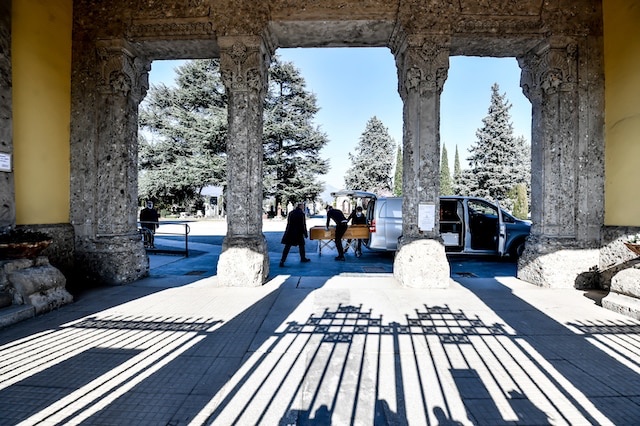In the part of Italy hit hardest by the coronavirus, the crematorium has started operating 24 hours a day.
Coffins have filled up two hospital morgues, and then a cemetery morgue, and are now being lined up inside a cemetery church. The local newspaper’s daily obituary section has grown from two or three pages to 10, sometimes listing more than 150 names, in what the top editor likens to “war bulletins.”
By death toll alone, the coronavirus has landed in the northern province of Bergamo with the force of a historic disaster.
But its alarming power goes even further, all but ensuring that death and mourning happen in isolation — a trauma in which everybody must keep to themselves.
All across Bergamo, people are being picked up in ambulances, rushed to the hospital and dying in sealed-off wards where even their closest relatives are not allowed. Many funerals are taking place with only a priest and a funeral home employee present, while family members face restrictions on gathering, remain in quarantine or are too sick themselves.
So many have died that there is a waiting list for burial and cremation.
“I think it’s worse than a war,” said Marta Testa, 43, who is in self-quarantine and whose father died Wednesday of the virus at age 85. “Dad is waiting to be buried. And we are here waiting to tell him goodbye.”
Other countries are only beginning to grapple with the pandemic’s implications and the distance it forces between even the closest people. But in Italy, death by lonely death, its full cost is becoming apparent.

Undertakers transfer a coffin out from a hearse at Bergamo’s cemetery on Monday. (Claudio Furlan/LaPresse/AP)
More than 2,000 people in Italy have died of covid-19, the disease caused by the virus — half of them over the most recent five-day stretch — and many of those cases have looked like that of Testa’s father, Renzo, a former newspaper advertising executive who felt short of breath a week ago Saturday, was taken to the hospital and did not see or talk to his family again.
“Grief is a phase that requires closeness, but our grief has had to come via the telephone,” said Testa, whose parents had been married for 50 years and whose mother also appears to have the virus but is recovering.
Testa’s siblings bring food to their mother. Out of precaution, they leave it on her front doorstep.
“Right now,” Testa said, “our family is living in a suspended state.”
Even as the illness has spread around the world, it is in Italy where people are contracting the virus — and dying of it — more rapidly than anywhere else. On Sunday, the country reported 368 new deaths, a toll exceeding even the highest daily figures from China. By Monday, 349 more people had died, bringing the total in less than one month to 2,158.
And within Italy, Bergamo, a wealthy province of 1.1 million to the east of Milan, has become the most worrying hot spot. Hospitals are at the breaking point there. Military doctors have been called in to assist. Residents describe Bergamo as a ghostly place where only ambulances and hearses are on the road at night. In the small town of Nembro, according to the Corriere della Sera newspaper, 70 people have died in the past 12 days. Some 120 died all of last year.
“It’s as if a chemical bomb has exploded,” said Daniela Taiocchi, 49, who helps handle obituaries for the local newspaper, L’Eco di Bergamo.
Bergamo also stands as a warning sign about how coronavirus cases can explode if restrictions are not quickly put in place. Italy dealt with an initial hot spot, in the province of Lodi, by placing 10 small towns under lockdown more than three weeks ago. But the government waited far longer to put similar measures in place elsewhere. Bergamo now has three times the number of coronavirus cases as Lodi.
This article originally appeared on the Washington Post
